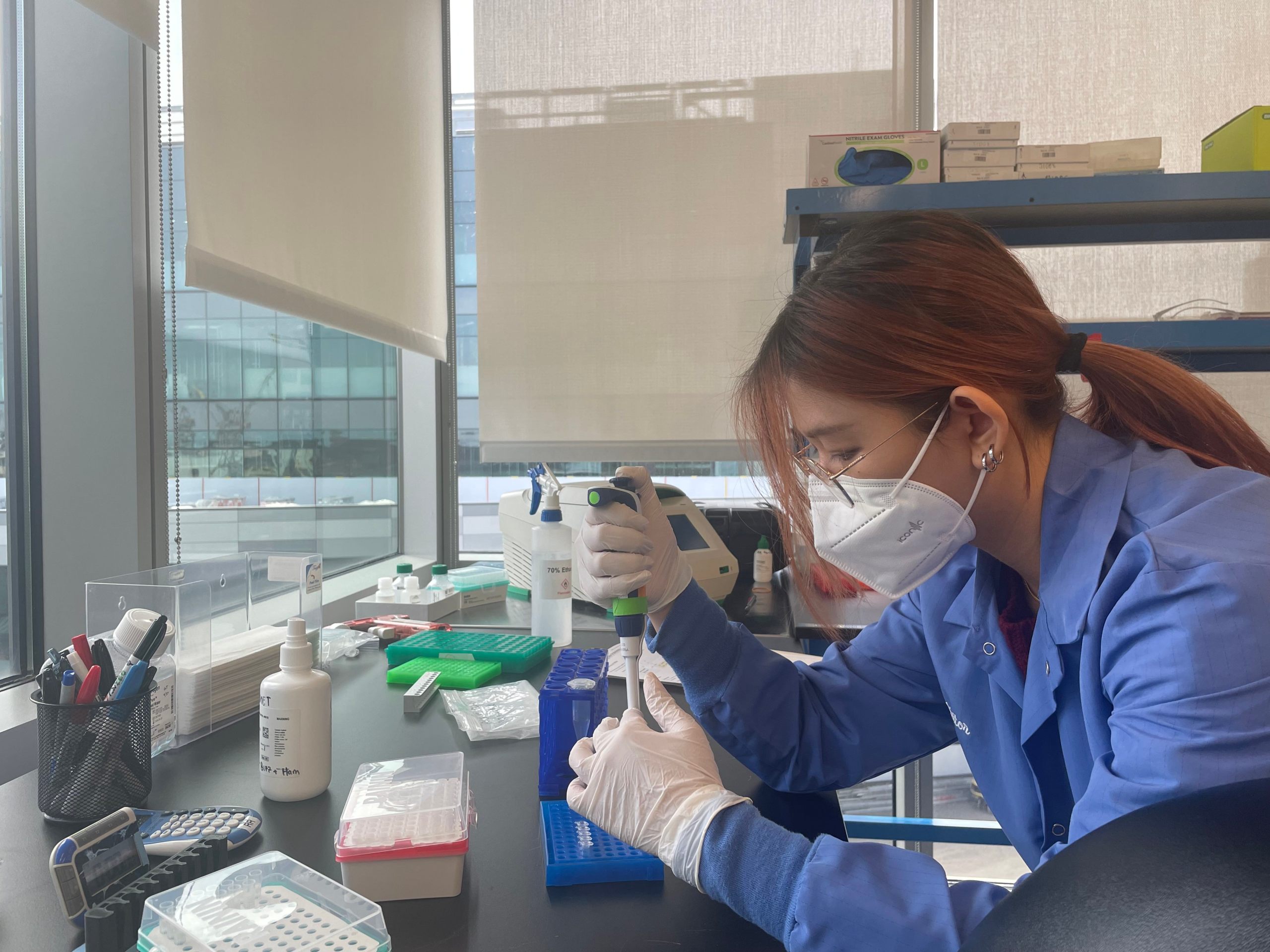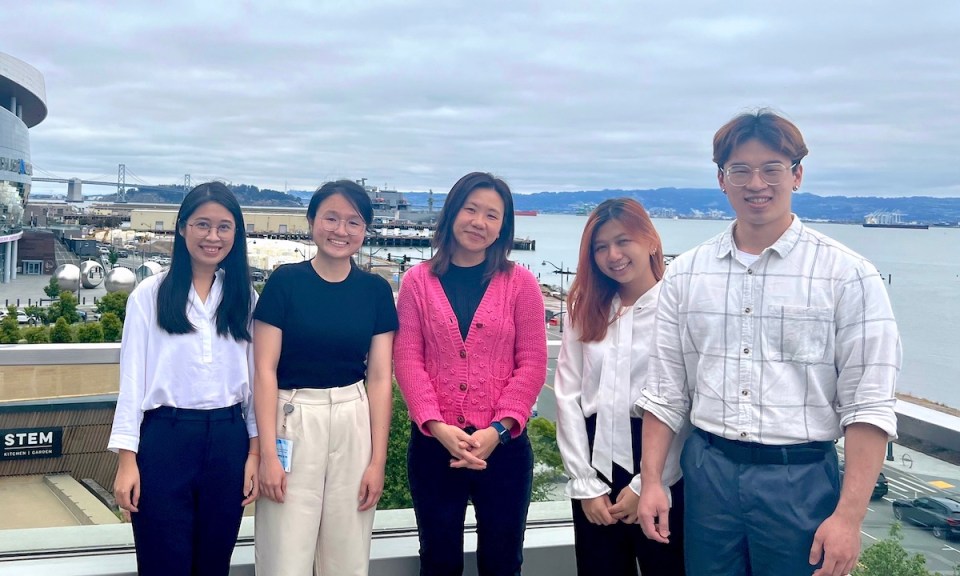In “Catalysts of Change” we highlight infectious disease scientists from across the world working to build research capacity locally and globally as recipients of grants from the Chan Zuckerberg Initiative and the Bill & Melinda Gates Foundation. CZ Biohub San Francisco’s Rapid Response group works with these teams to launch their metagenomic sequencing programs, then continues to support the groups as they become independent and train others.
In April 1997, a one-year-old child was admitted to Sibu Hospital in Sarawak, Malaysia with fever and mouth ulcers, symptoms suggestive of an illness known as hand, foot, and mouth disease (HFMD). HFMD is typically a mild disease, but the infant developed cardiovascular complications and died a day later. Soon, similar unusual pediatric deaths due to encephalitis and heart failure were observed across Sarawak. Alarmed by the high mortality of this outbreak, researchers at a health and community lab at Universiti Malaya, a public research institution in Kuala Lumpur, began to investigate. Two blocks away, Yoke Fun Chan was a first-year undergraduate studying biomedical science, unaware of what the researchers were uncovering.
The 1997 outbreak was initially thought to be caused by enterovirus A71 (EV-A71), which had previously been associated with small clusters of HFMD in other parts of the world, but never with such high mortality. This raised the possibility that other viruses may have been at play. Over the next few years, the researchers at Universiti Malaya used lab tests such as immunofluorescence, PCR, and DNA sequencing to show that while EV-A71 was indeed present, a novel adenovirus may have also played a role.
Though not directly involved with this discovery, Chan became so intrigued by EV-A71 and its devastating neurological effects that after completing her Bachelor’s degree, she decided to devote her Ph.D. studies to the virus. Now a professor of virology at Universiti Malaya’s Faculty of Medicine, she has since built up a research lab dedicated to studying the epidemiology and pathogenesis of emerging viruses, with a particular interest in the effects of neuroinfections on pediatric populations.
“In Malaysia now, what often happens is that brain infections go undiagnosed, or the causative agent remains a mystery,” she says. “That’s why we think it’s important to address this, before sporadic outbreaks become more frequent outbreaks, or even potentially epidemic. Also, we want to know more generally what pathogens are circulating in Malaysia, to help us to design more specific diagnostics.”

Jess Ong from Yoke Fun Chan’s group prepares samples for sequencing in the lab at CZ Biohub SF. (Credit: Genesis Magpayo)
This summer, Chan arrived in San Francisco to work with CZ Biohub SF’s Rapid Response group to develop her team’s capacity in using metagenomic next-generation sequencing (mNGS) as a pathogen detection and tracking tool. Her aim is to use this powerful technique of sequencing all of the genetic material in a biological sample to help identify rare or novel pathogens associated with neuroinfections and to translate timely clinical information into actionable decisions.
Neuroinfections occur when bacteria, viruses, fungi, or parasites attack the meninges, brain, or spinal cord and can cause severe inflammation in these tissues, known as meningitis and encephalitis. But as many as 60% to 80% of neuroinfection cases in Malaysia are believed to be undiagnosed, says Chan, also the head of the Department of Medical Microbiology at her university and the first Malaysian to win the ASEAN-US Science Prize for Women in 2020.
These inflammatory conditions can sometimes have noninfectious causes, such as autoimmune reactions, so they are difficult to correctly diagnose even for experienced neurologists, especially when only conventional lab tests are available, Chan says.
“In commercial diagnostics, standard tests such as culture and Gram staining are not sensitive enough. Commercial PCR assays only detect pathogens known to be common in the U.S. or Europe, but what’s common in Malaysia will be different,” she says. “And even within Malaysia, East and West Malaysia will likely have different pathogens circulating.”
Malaysia consists of two land masses separated by the South China Sea. West Malaysia is home to 80% of the country’s population, including the bustling capital city of Kuala Lumpur. East Malaysia, located on the northern part of the island of Borneo, is less populated and rich in biodiversity, giving it potential for animal reservoirs and vectors of infectious disease. This unique geography, along with varying ethnic groups and social practices, makes Malaysia a critical place to study the emergence and spread of novel pathogens.
A two-year study to identify rare and novel pathogens
Chan collaborates with a team of adult and pediatric neurologists, infectious disease pediatricians, and virologists in Malaysia for her two-phase project, using mNGS to answer two important questions: What is the epidemiology of pathogens infecting the central nervous system in Malaysia? Do different pathogens affect adults versus children?
Neuroinfections can have a high mortality rate and damaging long-term effects, which sparked her interest in understanding them. “We know that when a child – or anyone, actually – recovers from a brain infection, there will often be a lot of complications. You may have an attention deficit, you may have poorer cognitive function, and so on,” says Chan. “Brain cells don’t regenerate, so there can be a bigger harm whenever something infects the brain.”
In the first phase of the work the team will test stored cerebrospinal fluid (CSF) samples from patients, and in the second phase they will recruit adult and pediatric patients from Universiti Malaya Medical Center and several other hospitals in both East and West Malaysia.
mNGS is a powerful tool with the potential to identify a broad range of pathogens. In addition to pathogens associated with neurological illnesses, Chan suspects that mNGS could uncover other pathogens circulating in Malaysia. “For example, we never see yellow fever; we never see West Nile virus,” says Chan. “Are they present in Malaysia? Are we susceptible? Or are they already malicious and just go undiagnosed? Ultimately, by knowing the spectrum of pathogens present, that will help hospitals to set up simpler diagnostics.”
Although mNGS is not commonly used as a diagnostic tool in itself, once it identifies specific pathogens that may be present in a population, that allows clinics to then use conventional diagnostic tools, such as culturing and PCR, to test for those specific pathogens. mNGS can help clinicians zero in on what kinds of infections they need to test for when diagnoses are complex. What’s more, the tool allows public health practitioners to design and implement vaccination programs or nonmedical interventions to prevent transmission in the first place.
Training for the future

(from left) Jolene Fu, Joanne Lau, Yoke Fun Chan, Jess Ong, and Chun Hao of the Universiti Malaya spent two weeks at CZ Biohub SF this summer. (Credit: Genesis Magpayo)
A second goal, for year two of Chan’s project, is to get government labs in various regions of Malaysia trained in the technique so they will be able to detect rare and novel pathogens. She has a project on enterovirus surveillance with Malaysia’s National Public Health Laboratory, and hopes mNGS and NGS will empower regional public health officials to have the information to make the best public health decisions.
Chan, along with four students — Chun Hao, Jess Ong, Joanne Lau, and Jolene Fu — came to San Francisco for mentorship sessions led by the Rapid Response group at CZ Biohub SF. For the training part of her project, she hopes her students will also use NGS in their own projects and apply the many small but important tips they picked up at the Biohub to their mNGS laboratory workflows. Sharing such knowledge is a central aspect of Chan’s work, and there are already plans for the team to organize a workshop for public health officials in Malaysia at the end of the year.
“In order to learn, you need to teach as well. I think when you teach, you learn more,” Chan says. “So that’s the challenge I gave to the four of them, that they should be able to be competent enough to teach when they go back to Malaysia.”
Genesis Magpayo was CZ Biohub SF’s Summer 2023 Communications Intern. Rebecca Gowen and Gowtham Thakku of CZ Biohub SF’s Rapid Response group also contributed reporting and editing to this article.









